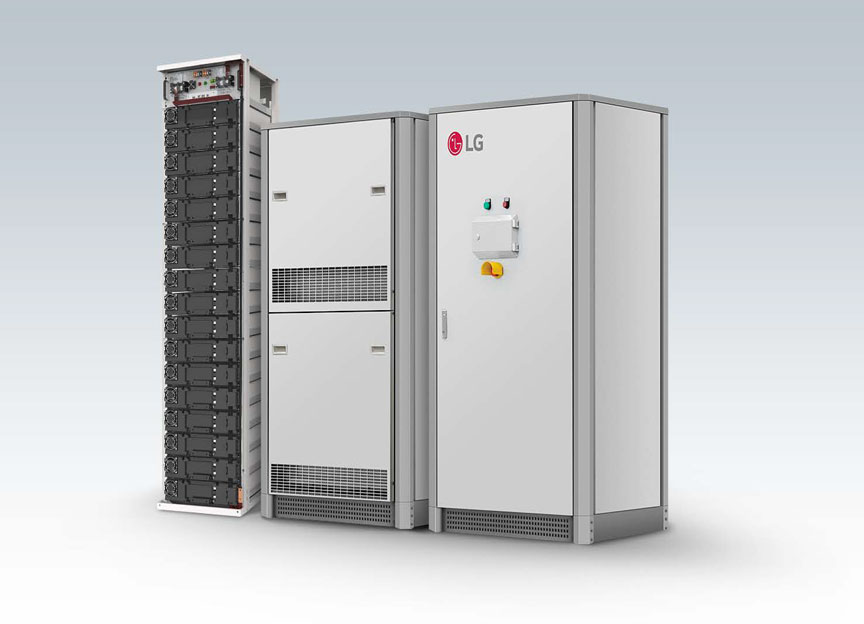
ENERGY STORAGE SYSTEMS
What is an ESS?
ESS stands for Energy Storage System. An ESS allows for the storage of excess energy generated by various sources, including renewable energy sources like solar or wind power. Our Energy Storage System (ESS) technology is a solution designed to reduce energy costs during peak demand periods. By storing excess energy during off-peak periods, ESS technology allows you to use it when energy demand is at its highest. ESS technology is a valuable addition to any energy system as it helps to balance the grid during peak demand periods.
Contact us to learn how our commercial energy storage solutions can improve energy sustainability and reduce costs for your business.
Store utility or solar energy for use anytime – at night or during an outage.
Reduce your organization’s carbon footprint and contribute towards your ESG goals.
Lower your organization’s energy bill.
FAQ
Yes, Sinclair Digital may provide design, installation and programming services. Sinclair Digital works with owners, specifying engineers, general contractors and electrical contractors to ensure a successful ESS implementation.
Yes, there are outdoor containerized and indoor versions available.
Yes, the ESS is UL 924 listed for that use.
UL 9540A is the standard for test method for evaluating thermal runaway fire propagation in Battery Energy Storage Systems, to help manufacturers have a means of proving compliance with the new regulations.
Thermal runaway begins when the heat generated within a battery exceeds the amount of heat that is dissipated to its surroundings. If the cause of excessive heat creation is not remedied, the condition will worsen. Internal battery temperate will continue to rise, causing battery current to rise, and creating a domino effect. The rise in temperature in a single battery will begin to affect other batteries in close proximity, and the pattern will continue, thus the term “runaway”.
Increased deployment of energy storage systems has led to field failures in past years with older ESS technology, heightening awareness of the dangers of thermal runaway. The LG ESS has been tested to UL 9540A which is the Standard for Test Method for Evaluating Thermal Runaway Fire Propagation in Battery Energy Storage Systems. UL 9540A provides LG with a means of proving compliance with thermal runaway fire propagation regulations. The minimum requirement of UL9540A is that one rack in thermal runaway does not cause secondary ignition to an adjacent rack, and only the initial rack burns. LG’s ESS exceeds this by quenching the heat at the source, so only one module burns up, the adjacent ones do not. The LG system contains internal fire detection and suppression technologies. The uniqueness of this functionally to LG shows LG’s leadership in this category.
- The costs of battery ESS has declined making these systems more economical.
- Onsite renewables help to move away from total grid dependence.
- Environmental benefits of moving away from fossil fuel power sources.
Yes. You may find more information here: The IRA Supercharges Energy
Storage Investment and Deployment (guidehouseinsights.com) and here: The
Inflation Reduction Act | US EPA
- Battery – stores electrical energy in DC.
- Battery management system (BMS) – The BMS ensures and keeps track of the
performance of the battery cells, system parameters and potential hazards. The BMS data is used to monitor and maintain an optimum level of charge. - Power conditioning system (PCS) – The PCS is designed to convert the direct current produced by batteries, or the battery system, into alternating current that can be used for power consumption on the grid. During off-peak time, the PCS takes the energy from the grid to store in the ESS.
The PCS’s main function is to convert the power between the energy storage system and the grid, and vice versa. - Power Monitoring System (PMS) – The PMS monitors and estimates power consumption. It manages system history and versions. The terms PMS and microgrid controller are sometimes used interchangeably. LG refers to the PMS as the supervisory unit. It’s like the navigator but it doesn’t directly control the equipment. An EMS or microgrid controller directly controls equipment. When LG’s PMS is used in conjunction with an EMS, the PMS sends a command to the EMS to charge/discharge. Some microgrid controllers do
both.
The battery chemistry is Lithium-Ion, NMC (Nickel Manganese Cobalt).
When is it cost effective to design with an ESS as compared to a diesel generator?
At our company, we believe that an Energy Storage System (ESS) is the most cost-effective solution for many energy needs. Unlike diesel generators, which can be expensive to operate and maintain, an ESS can store energy during off-peak periods and discharge it during peak periods, reducing the need for expensive grid power or peak shaving diesel generators.
Of course, the decision to use an ESS versus a diesel generator depends on many factors, including the application, location, and energy usage requirements. That’s why our team of experts is here to help you evaluate your specific needs and determine the most cost-effective solution for your business.
If you’re looking for a reliable, cost-effective way to meet your energy needs, an ESS from our company could be the perfect solution. Contact us today to learn more about how we can help you save money and reduce your carbon footprint with our advanced energy storage solutions.
Maximizing Solar Power for Net Zero Energy with Battery Energy Storage Systems
By pairing a battery energy storage system (ESS) with solar panels, it becomes possible to achieve net zero energy consumption.
This means that the total amount of renewable energy generated from the sun exceeds the energy consumed from the grid. The ESS allows excess solar power to be stored for use during times when the panels are not generating enough energy, such as during the night or on cloudy days. This ensures that energy demands are met without relying on the utility’s non-renewable power supply. With the help of a battery ESS, homes and businesses can significantly reduce their carbon footprint while also enjoying long-term savings on energy bills.
Inquire about Commercial Energy Storage Solutions
Please use the form below to email us for more information on Sinclair Digital Services, Inc.
